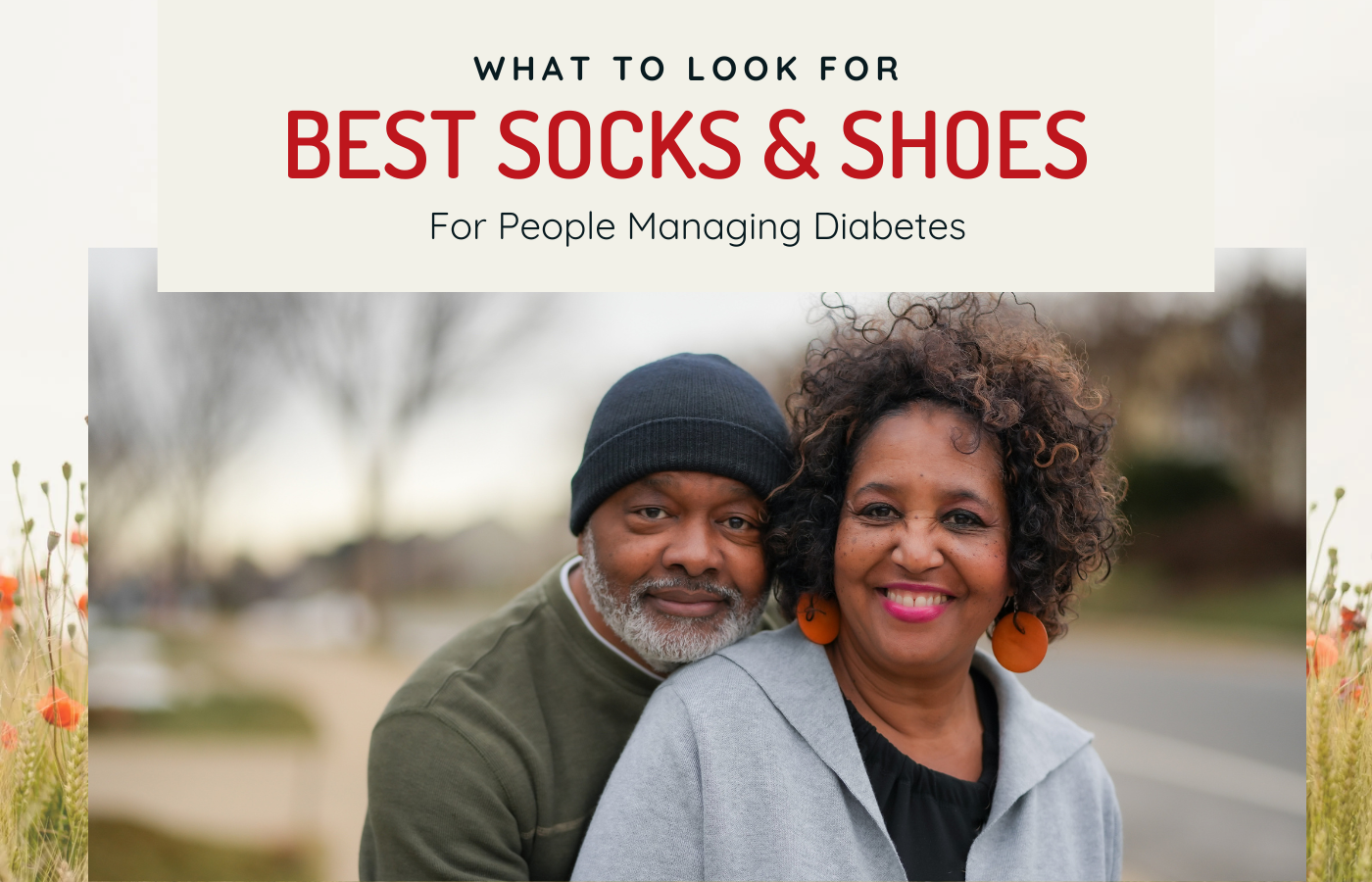That's Why We Left Amazon For Good
By Laura Oden
CEO/Founder Pandere Shoes
As the founder of Pandere, I’ve talked with literally thousands of customers about what brought them to our website. Over and over again, I hear the same thing: “I’m desperate. I’m about to give up. I’ve spent thousands of dollars on shoes that just sit in my closet. I keep buying shoes but always have to return them.”
And in my head, I’m thinking: Are you buying from Amazon?
If you have one of the problems that most of our customers have—swelling, bunions, or hammer toes—Amazon doesn’t know how to assess what you need. It’s like a self-feeding disaster. The more you buy, the more Amazon keeps feeding you the same options—even after you return them.
We were on Amazon for a little over a year. Honestly, I thought I was going to die as a business owner. Everyone who purchased returned their shoes.
I would try and try to initiate conversations with the customers to get basic information: Tell me about your problem. What size are you wearing? Where do they not fit?
And yet, there was absolutely no way to create a sizing chart that took into account the multitude of factors involved in fitting swollen feet—a foot shape that changes throughout the day and often encompasses multiple sizes.
Add to that, there is no metric in the shoe industry for measuring volume—like swelling, for example. And Amazon? They just couldn’t help.
A central part of the agreement that retailers make with Amazon when they go on the platform is that we cannot reach out directly to our customers in any way. We had to wait for the customer to reach out to us—which almost never happened on Amazon. They’d just buy shoes and return them.
Amazon customers didn’t send messages saying, “Hey, my shoes don’t fit. Can you help me figure out what size I need?” or “Will your shoes even fit me at all?” And even when I did reach out to customers who were returning their shoes, I almost never got a reply.
This is how Amazon wants it. They want you to buy as much stuff as you can possibly stomach. If you return it, no problem—it’s really not their concern. That problem belongs to the retailer, not the platform.
Finding the Right Fit: Why We Had to Break Free from Amazon
I was in a real quandary. Amazon was supposed to be the key to our future. Every business that was succeeding seemed to be on Amazon. But despite the platform’s massive reach, I just couldn’t find a way to overcome the communication barriers that came with it.
If I even pointed a customer to my website’s sizing page, it was considered a violation of Amazon’s terms. I felt trapped. Amazon was a dead end, and I had to find a real way to size people properly.
Shoes are hard to fit for normal feet, even without any medical problems. But when you add in swelling, bunions, or sensitivity like neuropathy, length and width are simply not enough information to get a customer to the promised land.
I needed a new process—one that took into account the real-world complexities of foot shape and volume.
Pandere Shoes: Designed for Comfort, Built for You
When you’re dealing with swollen feet, lymphedema, bunions, or other foot conditions, finding shoes that fit well isn't just about comfort—it’s about feeling like you belong. But most shoes on the market aren’t designed with people like you in mind. That’s where Pandere comes in.
Patented Technology That Sets Us Apart
What makes Pandere shoes truly special is that they’re not just designed differently—they’re patented. That’s right, not only the designs, but the expandability of our shoes is protected by a US Utility Patent. Through years of engineering and design innovation, we’ve created a shoe that adapts to your foot in ways no other shoe does.
Our heel technology is one of the hardest elements to replicate. We’ve designed it so that it stretches outward to accommodate swollen ankles but can also tighten up when you don’t have swelling, ensuring a perfect fit no matter what your feet are doing that day. These shoes can’t be copied—unless you have the specific expertise at our factory in Portugal. We take pride in this innovation, as it allows us to create shoes that work like no others on the market.
Toe Box Innovation for Swollen Feet
Unlike traditional shoes that are made with a rigid attached toe box, we’ve engineered ours to be flexible—giving room for swollen toes and allowing a more comfortable fit. This unique design choice means that you can actually move your toes freely, unlike many shoes that squeeze your feet and cause discomfort by the end of the day.
Stretch Materials Where You Need It Most
We’ve incorporated stretch lycra into the tongue and laces of our shoes, allowing them to grow with your feet as needed. If you have swelling, you know how painful it can be to wear tight shoes. Our stretch materials in all the key places where swelling occurs help to alleviate that misery. You can tighten them up in the morning, and they’ll loosen up as your feet swell, giving you comfort throughout the day.
This design ensures that you don’t have to endure the pain of tight shoes by the end of the day. Our shoes are made to adapt to your unique foot shape, providing the comfort and relief you deserve.
How to Get Your Feet Sized: Easy, Personalized Recommendations
At Pandere, we try to make it as easy as possible for you, the customer, to provide us with the information we need to tell you what size and styles will work best for you. We’re not here to make you guess, and if we don’t have a shoe that will fit your needs, we’ll always refer you to our friends at Pedors.com. They make larger sizes and have been in the business for a long time. Plus, they’re super nice and always happy to help!
Immediate Help with Sizing: Chat with Susan! If you need help right now, grab a tape measure, a paper, and a pen, and head over to our Chat on the website. Susan will walk you through the exact measuring process. She’ll ask you a few questions, crunch the numbers, and give you size and style recommendations right away. It’s simple, quick, and totally personal.
Submit Your Measurements for a Full Recommendation. If measuring on your own isn’t an option, or if you prefer a detailed recommendation, go to our sizing page: Find Your Size and fill out the form with all the requested information. I (Laura Oden, Founder of Pandere) will personally email you with a full list of recommended shoes and corresponding sizes. I usually provide a general assessment and explain my reasoning, and sometimes I’ll ask a few more questions if I need more info.
This process typically takes a day or so, but often leads to a meaningful email exchange between me and the customer. I can’t tell you how many people have said, “I was honestly at the end of my rope until I got your email.”
The Last Option: Email Me Directly. If you prefer a more personal touch, you can always email me directly at hello@pandereshoes.com. Let me know you’d like me to size you, and I’ll send instructions and ask you a few questions. This option might require some back-and-forth, but we always get there in the end.
Customer Testimonials: Real Stories, Real Relief
Here’s what some of our happy customers have to say:
Debra D.: “I literally could not find closed-toe shoes that fit, most shoes dug into the swollen parts of my ankle and HURT. But these Pandere Shoes are AMAZING.”
Diane G.: “I love, love, love my Two Steps. I’ve been wearing them on & off for two years now, with months at a time being my only shoe—especially when I travel.”
Ken F.: “3rd pair. They’re great!”
Grace E.: “I had no hope that these would work, because nothing ever works. But they do! And they’re not just bearable, but actually comfortable. I walked the dog last week for over an hour and it didn’t hurt. I can adjust for different sock thickness. My right foot (typical) doesn’t slip because I can tighten it. And these aren’t ugly or medical-looking, which is a bonus.”
Ready for the Perfect Fit?
Explore our full range of swollen feet shoes designed for lymphedema, bunion relief, and more. Take our sizing quiz or schedule a consultation, and let us help you find your perfect fit today.
👉 Get Customized Size Recommendations Now: Find Your Size





